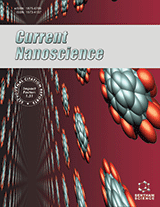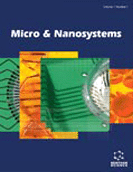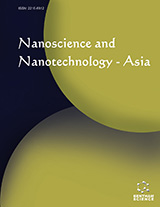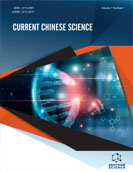Abstract
Background: Hydroxyapatite is similar to bone mineral in chemical composition and has good biocompatibility with host tissue and bone.
Objective: This work aims to tailor the mechanical and dielectric properties of hydroxyapatite with zinc substitution, to improve the wearability of implant and accelerate the healing process.
Methods: Pure and zinc incorporated hydroxyapatite Ca10(PO4)6(OH)2 samples have been successfully prepared by means of the chemical precipitation method.
Results: The results showed that hydroxyapatite(Hap) having a hexagonal structure was the major phase identified in all the samples. It was found that the secondary phase of β-tricalcium phosphate (β-TCP) formed due to the addition of zinc, resulting in biphasic structure BCP (Hap + β-TCP). A minor phase of ZnO also formed for a higher concentration of Zn (Zn ≥ 2mol%) doping. It was found that the Zn incorporation to Hap enhanced both mechanical and dielectric properties without altering the bioactive properties. The microhardness increased up to 0.87 GPa for Zn concentration equal to 1.5mol%, which is comparable to the human bone ~0.3 - 0.9 GPa. The dielectric properties evaluated in the study showed that 1.5 mol% Zn doped hydroxyapatite had the highest dielectric constant. Higher values of dielectric constant at low frequencies signify its importance in healing processes and bone growth due to polarization of the material under the influence of the electric field.
Conclusion: Sample Z1.5, having 1.5 mol% Zn doping, showed the most optimized properties suitable for bone regeneration applications.
Keywords: Zinc, hydroxyapatite, bioactivity, dielectric constant, BCP, bone regeneration.
Graphical Abstract
Current Nanoscience
Title:Tuning the Mechanical and Dielectric Properties of Zinc Incorporated Hydroxyapatite
Volume: 16 Issue: 6
Author(s): Alliya Qamar*, Rehana Zia and Madeeha Raiz
Affiliation:
- Department of Physics, Lahore College for Women University, Lahore,Pakistan
Keywords: Zinc, hydroxyapatite, bioactivity, dielectric constant, BCP, bone regeneration.
Abstract:
Background: Hydroxyapatite is similar to bone mineral in chemical composition and has good biocompatibility with host tissue and bone.
Objective: This work aims to tailor the mechanical and dielectric properties of hydroxyapatite with zinc substitution, to improve the wearability of implant and accelerate the healing process.
Methods: Pure and zinc incorporated hydroxyapatite Ca10(PO4)6(OH)2 samples have been successfully prepared by means of the chemical precipitation method.
Results: The results showed that hydroxyapatite(Hap) having a hexagonal structure was the major phase identified in all the samples. It was found that the secondary phase of β-tricalcium phosphate (β-TCP) formed due to the addition of zinc, resulting in biphasic structure BCP (Hap + β-TCP). A minor phase of ZnO also formed for a higher concentration of Zn (Zn ≥ 2mol%) doping. It was found that the Zn incorporation to Hap enhanced both mechanical and dielectric properties without altering the bioactive properties. The microhardness increased up to 0.87 GPa for Zn concentration equal to 1.5mol%, which is comparable to the human bone ~0.3 - 0.9 GPa. The dielectric properties evaluated in the study showed that 1.5 mol% Zn doped hydroxyapatite had the highest dielectric constant. Higher values of dielectric constant at low frequencies signify its importance in healing processes and bone growth due to polarization of the material under the influence of the electric field.
Conclusion: Sample Z1.5, having 1.5 mol% Zn doping, showed the most optimized properties suitable for bone regeneration applications.
Export Options
About this article
Cite this article as:
Qamar Alliya *, Zia Rehana and Raiz Madeeha , Tuning the Mechanical and Dielectric Properties of Zinc Incorporated Hydroxyapatite, Current Nanoscience 2020; 16 (6) . https://dx.doi.org/10.2174/1573413716666200313162039
| DOI https://dx.doi.org/10.2174/1573413716666200313162039 |
Print ISSN 1573-4137 |
| Publisher Name Bentham Science Publisher |
Online ISSN 1875-6786 |
 15
15 1
1
- Author Guidelines
- Bentham Author Support Services (BASS)
- Graphical Abstracts
- Fabricating and Stating False Information
- Research Misconduct
- Post Publication Discussions and Corrections
- Publishing Ethics and Rectitude
- Increase Visibility of Your Article
- Archiving Policies
- Peer Review Workflow
- Order Your Article Before Print
- Promote Your Article
- Manuscript Transfer Facility
- Editorial Policies
- Allegations from Whistleblowers























